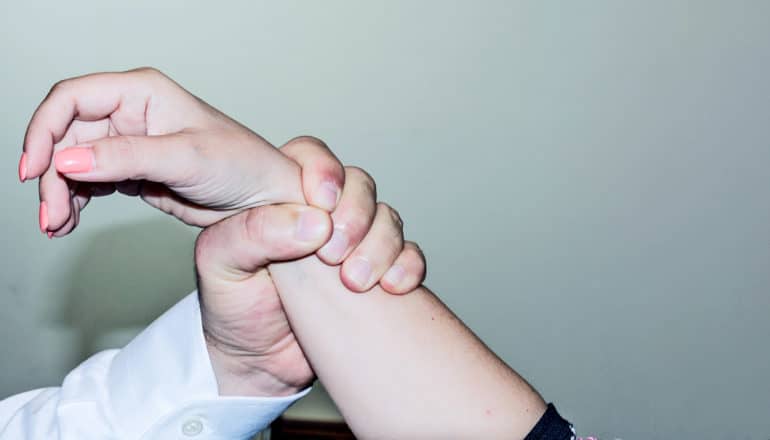
Women who have experienced domestic abuse are 44% more likely to die from any cause compared to the general population, a study finds.
The researchers have also identified an increased risk of developing cardiometabolic diseases such as cardiovascular disease and type 2 diabetes in those who have experienced domestic abuse, although more research will need to determine what other factors specifically lead to an increase in mortality.
Domestic abuse, which can consist of physical, psychological, sexual, financial, and emotional abuse, affects estimated 1 in 3 women globally. About 1 in 4 women in the United Kingdom have experienced it at some point in their life.
The research, which is part of a wider investigation into the health impacts of domestic abuse, appears today in the Journal of the American Heart Association.
Using medical records from UK general practitioner (GP) surgeries between 1995 and 2017, the team were able to identify 18,547 women with a recorded code relating to exposure to domestic abuse. These were matched to 72,231 like for like women (similar in terms of age, body mass index, deprivation level, and smoking status) who did not have such an experience on record.
The researchers then followed both groups while they were contributing to the dataset and calculated the risk of developing cardiometabolic illness and all-cause mortality. They found that the risk of developing cardiovascular disease was increased by 31% and type 2 diabetes by 51% in the exposed group. The research did not find an association with hypertension.
Although the team were not able to confirm the reason for the increased mortality risk, the increased cardiovascular risk may partly explain it. It is important to note that during the study period, the number of patients who died was relatively few (948 out of a total cohort of 91,778) likely due to the age at cohort entry being young (37 years old). The adjusted relative risk increase was 44%, with the absolute risk of death being 6 per 1,000 women per year in the exposed cohort (recorded exposure to domestic abuse) compared to 3.1 per 1,000 women per year in those without such a record in their medical notes.
The study does, however, identify a discrepancy: an estimated 1 in 4 women in survey data have experienced domestic abuse, compared to about 0.5% coded as such in GP data. This means that many of those not coded as exposed to domestic abuse may have actually experienced some abuse. If this is the case, then it would suggest that the displayed results may be an underestimation.
Better linkage and data sharing among public services, such as the National Health Service and police, could help inform GPs to further support the mental and physical health needs of their patients who have experienced domestic abuse.
“As further in-depth detail of the traumatic experiences is not available in these records, it was not possible to assess whether the severity of domestic abuse was associated with a different risk impact,” says lead author Joht Singh Chandan of Warwick Medical School and the University of Birmingham’s Institute of Applied Health Research.
“It is important to note that not all cases of domestic abuse go onto develop adverse health outcomes, but from this study we can see that within this dataset, the cohort of women recorded to have experienced domestic abuse are at a greater risk than those without such records present.
“Considering the prevalence of domestic abuse, there is a public health burden of cardiometabolic disease likely due to domestic abuse. Although our study was not able to answer exactly why this relationship exists, we believe that it is likely due to the effects of acute and chronic stress. Additionally, we know that exposure to domestic abuse may be associated with other lifestyle factors (such as poor diet, alcohol, and smoking as seen in our study).
“Although we made attempts to account for the impact of this on our results, these lifestyle factors still contribute risk for the development of cardiometabolic disease, therefore need public health approaches to manage this in women who have experienced domestic abuse.
“Not every woman experiencing domestic abuse will go onto to develop a long-term illness. Our understanding of the physical and mental health effects of domestic abuse is arguably still in its infancy.
“The introduction of the recently formed violence reduction units could play a role in supporting survivors of domestic abuse, as would the Domestic Abuse Bill which would give survivors the rights and support they clearly need.”
In 2019, the same team of researchers published a study showing that women who have experienced domestic abuse are almost twice as likely to develop fibromyalgia and chronic fatigue syndrome, and another in June 2019 showing that UK survivors of domestic abuse are three times more likely to develop severe mental illness.
Source: University of Warwick
The post After domestic abuse, women face 44% higher mortality risk appeared first on Futurity.
from Futurity https://ift.tt/3220KKA
No comments:
Post a Comment